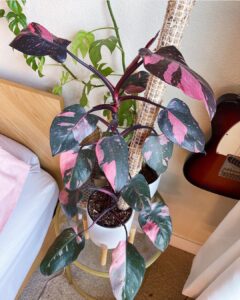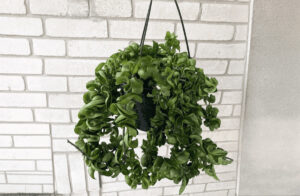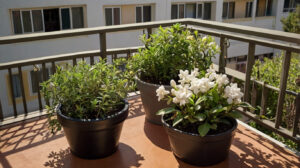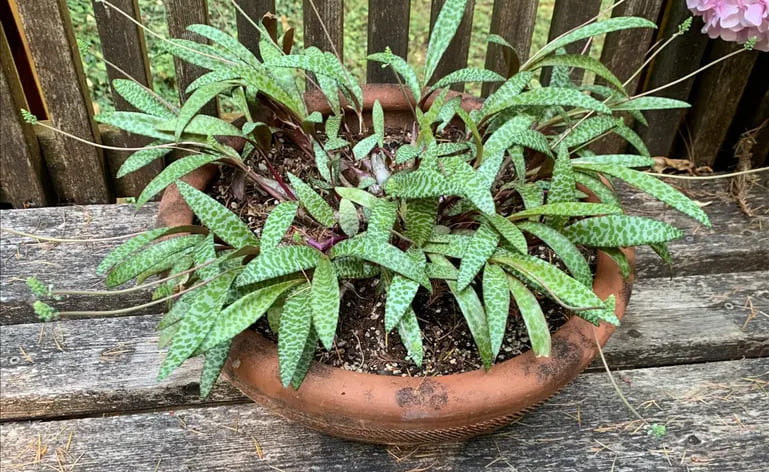
Silver squill (Ledebouria socialis) is a resilient perennial native to the dry savannas of South Africa. This charming houseplant is cherished for its striking silvery, lance-shaped leaves adorned with green spots, making it an eye-catching addition to any indoor garden. With its ability to store moisture, the silver squill is a perfect choice for those seeking a low-maintenance plant that can thrive in various conditions.
| Common Name | Silver squill, wood hyacinth, leopard lily |
|---|---|
| Botanical Name | Ledebouria socialis |
| Family | Asparagaceae |
| Plant Type | Perennial |
| Mature Size | 6-10 in. tall and wide |
| Sun Exposure | Partial |
| Soil Type | Well-drained |
| Soil pH | Acidic, neutral, alkaline |
| Bloom Time | Spring |
| Flower Color | Green |
| Hardiness Zones | 10-11 (USDA) |
| Native Area | Africa |
| Toxicity | Toxic to humans, toxic to pets |
In this article
- 1 Silver Squill Care
- 1.1 Light
- 1.2 Water
- 1.3 Soil
- 1.4 Temperature and Humidity
- 1.5 Fertilizer
- 1.6 Types of Silver Squill
- 1.7 Pruning
- 1.8 Propagating Silver Squill
- 1.9 Potting and Repotting
- 1.10 Overwintering
- 1.11 Common Pests and Plant Diseases
- 1.12 How to Get Silver Squill to Bloom
- 1.13 Common Problems with Silver Squill
- 1.14 Frequently asked questions
Silver Squill Care
Silver squill is particularly easy to care for, making it suitable for both beginners and seasoned gardeners. With minimal watering needs and a compact size, this plant can thrive in small spaces and adapt to various indoor environments.
Light
Silver squill prefers bright, indirect sunlight for at least three to four hours a day. It naturally grows in partially shaded areas of evergreen woodlands, so avoid exposing it to harsh, direct sunlight that can damage its leaves.
Water
Once established, silver squill requires minimal watering, as it is drought-tolerant like succulents. Allow the top inch of soil to dry out before watering during warmer months. In winter, reduce watering frequency to encourage the plant’s natural dormancy.
Soil
For optimal growth, silver squill thrives in humus-rich, sandy soil but can also adapt to rocky soils. Ensure the potting medium is well-drained, with a pH range between 6 and 8 for best results.
Temperature and Humidity
Indoors, silver squill is comfortable at typical room temperatures. Outdoors, it does best in temperatures above 60°F and can withstand brief drops to around 30°F. The plant thrives in low to average humidity levels.
Fertilizer
During the growing season in spring and summer, apply a balanced liquid fertilizer every two months for in-ground plants and monthly for container plants to support healthy growth.
Types of Silver Squill
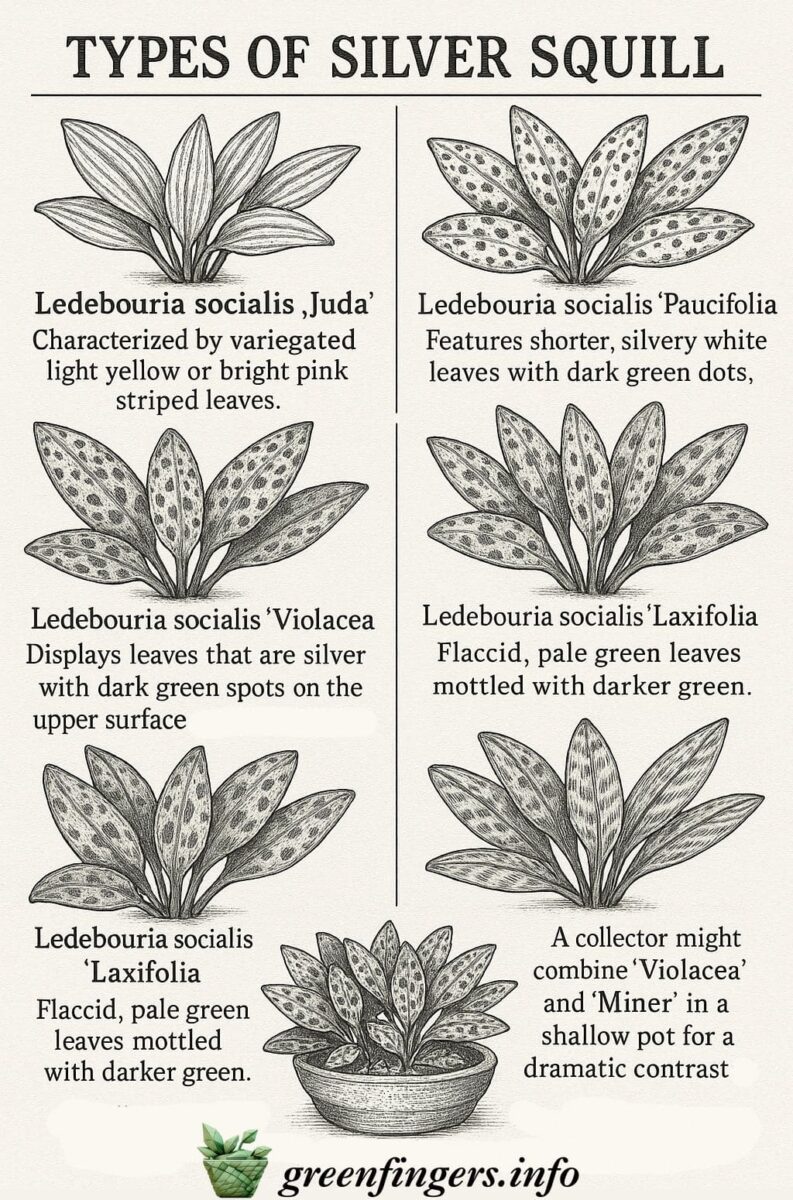
While there isn’t a formal classification system for silver squill cultivars, several popular varieties include:
- Ledebouria socialis ‘Juda’: Characterized by variegated light yellow or bright pink striped leaves.
- Ledebouria socialis ‘Miner’: A dwarf variety perfect for smaller spaces.
- Ledebouria socialis ‘Paucifolia’: Features shorter, silvery white leaves with dark green dots.
- Ledebouria socialis ‘Violacea’: Displays leaves that are silver with dark green spots on the upper surface and violet underneath.
- Ledebouria socialis ‘Laxifolia’: Flaccid, pale green leaves mottled with darker green.
- Ledebouria socialis ‘Zebrina’: Silvery leaves with darker horizontal stripes.
A collector might combine ‘Violacea’ and ‘Miner’ in a shallow pot for a dramatic contrast: the violet undersides of ‘Violacea’ paired with the compact, leopard-spotted leaves of ‘Miner’ create a dynamic, low-maintenance display.
Pruning
Minimal pruning is required for silver squill. Simply remove any yellowing or dead leaves to improve air circulation and maintain a neat appearance.
Propagating Silver Squill
Propagation is typically done through division, as seed germination can be slow and inconsistent. Here’s how to propagate:
- After flowering, gently remove the plant from its pot or lift it from the ground.
- Carefully separate the bulb clusters into individual sections.
- Replant each section in pots or garden soil, keeping one-third to half of the bulb above the soil line.
- Water immediately and maintain evenly moist soil until new growth appears.
Potting and Repotting
Choose a well-draining potting mix or a cactus and succulent mix for silver squill. Terra cotta pots are ideal, allowing excess moisture to evaporate. Repot when the bulbs become crowded, either transferring to a larger pot or dividing them to create new plants.
Overwintering
In areas where temperatures drop below 30°F, bring the plant indoors for winter. Place it in a spot with bright, indirect light and water sparingly to prevent the soil from completely drying out.
Common Pests and Plant Diseases
While generally resilient, silver squill can be susceptible to pests like mealybugs, aphids, spider mites, scale, and thrips. Watch for signs of root rot or leaf spot and treat accordingly.
How to Get Silver Squill to Bloom

If your silver squill isn’t blooming, ensure it has experienced a dry dormancy period during winter. Adjust your watering to promote proper rest and keep it in a slightly cooler environment during this time.
Common Problems with Silver Squill
Curled, brown-edged leaves may indicate too much direct sunlight or insufficient watering. Ensure the plant receives partial sun and adjust watering accordingly.
Frequently asked questions
Is silver squill a succulent?
While it shares drought tolerance and a similar appearance, silver squill is not classified as a succulent.
Are the silver squill flowers fragrant like hyacinth?
Though related to hyacinths, silver squill flowers are not fragrant.
YOU MAY ALSO LIKE: Paddle Plant
